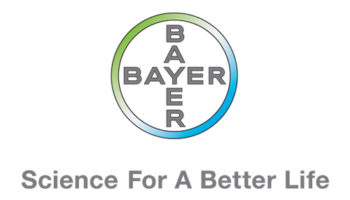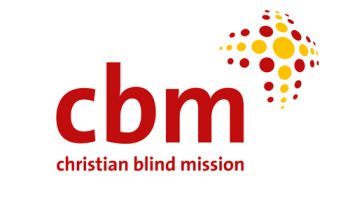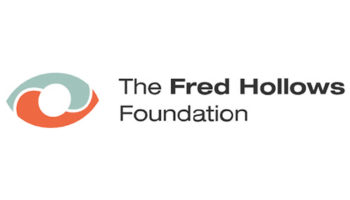Join a powerful, unprecedented alliance for better eye health for all.
Join IAPBAbout
Definitions
Age-related macular degeneration
AMD is a disease affecting the central area of the retina (macula) at the back of the eye.
Allied ophthalmic personnel
Typically, allied ophthalmic personnel comprise opticians, ophthalmic nurses, orthoptists, ophthalmic and optometric assistants, ophthalmic and optometric technicians, vision therapists, ocularists, ophthalmic photographer/ imagers, and ophthalmic administrators.
Astigmatism
Astigmatism is mostly caused by an irregular-shaped cornea and/or lens which give rise to multiple images that are not focussed on the retina. Both distance and near objects appear blurred and distorted.
Cataract
The opacification (clouding) of the lens of the eye, which prevents clear vision and usually progresses to blindness if left untreated.
Corneal opacity
Corneal visual impairment encompasses a wide variety of infectious, degenerative, and inflammatory eye diseases that cause scarring of the cornea, the clear window positioned at the front of the eye.
CSR
The Cataract Surgical Rate is the number of cataract operations performed per year per one million population.
Diabetic retinopathy
Diabetic retinopathy damages blood vessels inside the retina at the back of the eye. It commonly affects both eyes and can lead to vision loss if it is not treated. Poorly controlled blood sugars, high blood pressure and high cholesterol increase the risk of developing diabetic retinopathy.
Eye Care Service Assessment Tool (ECSAT)
The ECSAT tool provides guidance for assessing the status and functionality of a country’s eye care service on the basis of the six areas of the WHO framework for strengthening health systems.
GAP
The Global Action Plan was adopted at the 66th World Health Assembly as part of resolution 66.4. Its full title is Universal Eye Health: a Global Action Plan 2014 – 2019. The vision of the GAP is a world in which nobody is needlessly visually impaired; where those with unavoidable vision loss can achieve their full potential, and where there is universal access to comprehensive eye care services.
GBD Study
The Global Burden of Disease Study is the most comprehensive world-wide observational epidemiological study to date. It describes mortality and morbidity from major diseases, injuries and risk factors to health at global, national and regional levels.
GDP (Gross Domestic Product)
A measure of the size of a country’s economy. It is the sum of the products produced within a country’s borders, including products produced by foreign-owned enterprises.
Gender inquality index
Measures gender inequalities in three important aspects of human development—reproductive health, empowerment and economic status.
Glaucoma
The term ‘glaucoma’ relates to a group of conditions that can be classified in a variety of ways, but all of which are characterised by optic nerve damage (often referred to as cupping) and visual field loss (often with an arcuate pattern of mid-peripheral loss), secondary to retinal ganglion cell damage and death.
GVP (Global Vision Database)
The overall goal of the Global Vision Database (GVD) is to develop and deploy new and improved evidence on the prevalence of blindness and vision impairment and its causes, on intervention coverage, to inform and influence global priorities and programs. Find out more about the Global Vision Database.
HDI
A summary measure of average achievement in key dimensions of human development: a long and healthy life, being knowledgeable and have a decent standard of living.
Integrated people-centred eye care
Services that are managed and delivered so that people receive a continuum of eye health interventions covering promotion, prevention, treatment and rehabilitation.
National Eye Committee
A group of key stakeholder representatives, with responsibility for the development and implementation of national eye health plans.
National Eye Health Co-ordinator
The government appointed person responsible for coordination and implementation of national eye health activities.
National Eye Health Plan
A strategic document that guides the Ministry of Health and other stakeholders in their efforts to reduce avoidable blindness and vision impairments.
Hyperopia
Light from near objects is focussed ‘behind’ the retina. This makes it difficult, particularly for children, to see close up whilst for adults both near and distance vision is affected.
Myopia
Light from distant objects is focussed ‘in front’ of the retina, making it difficult to clearly see objects in the distance. Myopia is usually due to an excessive elongation of the eye.
Myopic macular degeneration (MMD)
A vision-threatening condition in people with myopia, usually high myopia, which comprises diffuse, patchy macular atrophy with or without lacquer cracks, choroidal neovascularization and Fuchs spot.
Ophthalmologist
Ophthalmologists are medical doctors who have been trained in ophthalmic medicine and/or surgery and who evaluate and treat diseases of the eye.
Optometrist
Optometrists are the primary healthcare practitioners of the eye and visual system who provide comprehensive eye and vision care, which includes refraction and dispensing, detection/diagnosis and management of disease in the eye, and the rehabilitation of conditions of the visual system.
Presbyopia
In the younger eye the lens is elastic and can change shape as the ciliary muscles supporting the lens contract or relax, enabling images of objects at any distance to be focussed on the retina. This is known as accommodation, but as part of the ageing process the lens becomes harder and less elastic, making accommodation more difficult. Most people over the age of 40 will have a degree of presbyopia and cannot see near objects clearly.
Prevalence, age-standardised
Age-standardised rates are calculated by assuming a country and/or region has an age profile identical to that of the world population. Age-standardised rates should be used when comparing countries or regions.
Prevalence, crude
The crude prevalence is the actual percentage of each country or region’s population with blindness and vision impairment. Crude prevalence should be used when assessing the burden of blindness and vision impairment at the country or regional level.
Refractive disorders
In VLEG data, refractive disorders refer to myopia, hyperopia and astigmatism that cause blurred distance vision.
RAAB
Rapid Assessment of Avoidable Blindness is a rapid, population-based survey methodology on blindness, visual impairment and eye care services among people aged 50 years and over.
SDG
The Sustainable Development Goals were adopted by the UN General Assembly in September 2015. They include 17 Goals and 169 targets to bring about change in all countries and globally to end poverty, protect the planet and ensure prosperity. They integrate all three dimensions of sustainable development – the economic, social and environmental – and are built on a commitment to leave no-one behind.
Trachoma
Repeated infections of the conjunctivae with Chlamydia trachomatis can lead to trichiasis, corneal opacity and blindness.
Universal health coverage
When all people receive the quality, essential health services they need, without being exposed to financial hardship.
Vision impairment, distance
The International Classification of Diseases 11 (2018) classification for distance vision impairment is as follows.
For characterizing binocular vision impairment, vision acuity should be measured with both eyes open with presenting correction if any. For characterizing monocular visual impairment, visual acuity should be measured monocularly with presenting correction if any.
| Level of vision impairment | Visual acuity scale | ||
| 6m | 20ft | Decimal | |
| Mild | <6/12 but ≥6/18 | <20/40 but ≥20/70 | <0.5 but ≥0.3 |
| Moderate | <6/18 but ≥6/60 | <20/70 but ≥20/200 | <0.3 but ≥0.1 |
| Severe | <6/60 but ≥3/60 | <20/200 but ≥20/400 | <0.1 but ≥0.05 |
| Blindness | <3/60 | <20/400 | <0.05 |
If the extent of the visual field is taken into account, patients with a visual field of the better eye no greater than 10° in radius around central fixation are considered to be blind.
Vision impairment, near
The International Classification of Diseases 11 (2018) classifies near vision impairment as presenting near visual acuity worse than N6 at 40cm with existing correction.
Vision loss
According to VLEG, vision loss is habitual distance or near vision impairment, which may be permanent or treatable.
Vision loss, treatable
Habitual distance or near vision impairment which can be corrected, for example with glasses or surgery.
VLEG (Vision Loss Expert Group)
The Vision Loss Expert Group is an international group of mainly ophthalmologists and optometrists with experience in ophthalmic epidemiology. More about VLEG.
WHA
The World Health Assembly occurs annually, is attended by delegations from all WHO Member States and focuses on a specific health agenda prepared by the Executive Board.








